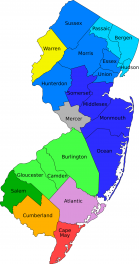By Elmer Manuel – The Philippine Daily Tribune
MANILA, May 01, 2019 – Earthquake swarms on Friday in Gen. Luna, Surigao del Norte have alerted the Philippine Institute of Volcanology and Seismology (Phivolcs) to the possibility of a magnitude 8 trembler.
Phivolcs director Renato Solidum said that while the swarms may cause only weak jolts, the possibility of a very strong one is also not far-fetched after last Friday’s magnitude 5.5 earthquake shook the province.
The Surigao quake was the fourth strongest in a series of strong tremors that started two weeks ago in Luzon, which resulted in 19 deaths, then in Leyte and Cebu, and the third in Davao.
Earthquake swarms are sequences of many tremors striking in a relatively short period of time.
The length of time used to define the swarm itself varies, but may be of the order of days, weeks or months.
“If the ‘Big One’ hits, it is predicted to stall the heart of Luzon into a nearly motionless clump with possible 35,000 deaths” Philvolcs chief Renato Solidum
They are differentiated from earthquakes succeeded by a series of aftershocks by the observation that no single earthquake in the sequence is obviously the main shock.
“What we were saying is that when it comes to trenches — like the segment offshore of Surigao provinces — they have the capability to generate a magnitude 8 earthquake. We have already seen that possibility,” said Solidum. “However, it is also possible that only moderate earthquakes will be generated and nothing more.”
The Phivolcs chief added that the period in which the earthquake will hit a certain place cannot be detected, although the agency can detect its magnitude or the energy released by an earthquake at the focus.
The Phivolcs has long been warning about the “Big One,” a possible magnitude 7.2 earthquake that may result from a movement of the Marikina Valley Fault System.
“We cannot predict when a major earthquake will happen, but we can estimate the magnitude on each fault,” said Solidum as he advised residents in the eastern section of the country to be prepared and assess their tsunami preparedness measures.
He also clarified that an earthquake swarm differs from an aftershock as the latter occurs after a bigger earthquake.
The earthquake in Surigao del Norte was tectonic in origin and had an 11-kilometer depth of focus. The epicenter was recorded 70 kilometers southeast of Gen. Luna town.
In a separate interview, Solidum also denied that Mt. Pinatubo in Zambales province emitted smoke following the powerful quake that rumbled across Luzon last week, saying that the “smoke” is actually volcanic ash disturbed by falling rocks during the quake and was swept by the wind.
Solidum was reacting to an online article which claimed that state seismology agency supposedly found “irregularities” in Pinatubo following the magnitude 6.1 quake that was centered in Castillejos, Zambales on 22 April.
“When the quake struck, a landslide occurred and when rocks roll, dust from the 1991 eruption and old volcanic ash is swept by the wind,” Solidum said.
Some 99 private villages and subdivisions in 80 barangays are lined above the fault, with 6,331 buildings in a span of 2,964.10-square kilometers (and are) in danger of possible destruction.
He added that it will likely take “many” years before a repeat of Pinatubo’s 1991 eruption occurs. The Pinatubo eruption killed thousands and left parts of neighboring Tarlac and Pampanga provinces buried in lahar, a destructive mudflow on the slopes of a volcano..
“Pinatubo is not showing any activity and we think that there will be many years, a century, for it to store enough magma rich in gas again,” he noted.
We cannot predict when a major earthquake will happen, but we can estimate the magnitude on each fault.
The Phivolcs has long been warning about the “Big One,” a possible magnitude 7.2 earthquake that may result from a movement of the Marikina Valley Fault System that extends from Bulacan to Rizal, Quezon City, Marikina, Pasig, Makati, Taguig, Makati, Muntinlupa and the southern provinces of Cavite and Laguna.
If the “Big One” hits, it is predicted to stall the heart of Luzon into a nearly motionless clump with possible 35,000 deaths.
Some 99 private villages and subdivisions in 80 barangays are lined above the fault, with 6,331 buildings in a span of 2,964.10-square kilometers in danger of possible destruction.







